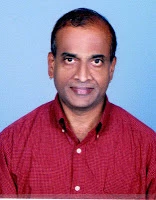Yoga Research: How Yoga Can Support Healthy Brainwaves

Neurons communicate through electrochemical signals that are the basis for motor functions, thoughts, emotions, and behavior. These electrochemical signals—also called brainwaves—can be detected by placing sensitive sensors on the head/scalp. Brainwaves are functionally characterized as bandwidths and range from slow to fast, loud to subtle and simple to complex. Thus, our brainwaves change according to our behavior and the emotions that we display. 
Slower brainwave patterns indicate that the individual is tired, fatigued, sluggish, slow, or dreamy. Fast brainwave patterns are seen when an individual is alert, fast-paced and generally in a hyper-moody behavior. While these are broad descriptions, some brainwaves are far more complex and reflecting various aspects of individuality.
4 Types of Brainwaves
-
Delta Waves: These brainwaves are low frequency, high amplitude, deeply penetrating, slow brainwaves that are generated during deep meditation and dreamless sleep. The presence of delta waves indicates that the individual is no longer influenced by external impressions. Researchers note that people with health issues do better in this state, indicating the importance of deep sleep to the healing process. Delta wave activity is highest in infants and is the predominant brain wave in infants. Delta waves have been shown to decrease across the lifespan and especially in the older adults by which time deep sleep and delta waves may be entirely absent.

-
Theta Waves: These brainwaves are seen most often in dream sleep and also appear together with the delta waves in deep meditation. Theta waves appear during learning, memory acquisition, intuition, nightmares, and during emotional display. A person who daydreams presents a theta brainwave state. When a person who is driving after a heavy meal or on a quiet freeway realizes that he/she is unable to recall the last five miles, this is theta wave in action. Individuals who ideate a lot can blame it on the theta waves. Theta waves are predominant on all those tasks that are done in an auto mode.
-
Alpha Waves: Being here and now or being in the present state marks the appearance of alpha brainwaves. They predominantly appear during the resting state and their appearance signals non-arousal, calmness, mind/body integration, and learning. A person who has completed a task and sits down to rest takes time out to reflect, or takes a break from a meeting and walks in silence is often in an alpha state.
-
Beta Waves: These brainwaves are fast acting and dominate during the waking state and when we are alert, attentive, and engaged in mental activity. When the brain is stimulated or aroused, it generates beta waves that are characteristics of a mind that is engaged. Thus, an orator, a debater, a teacher, or a talk show host would all present beta waves in their brain when they are engaged in this form of activity.
These four brainwave states are common to the entire human species. Individuals of all ages experience these same brainwaves, which are consistent across race, cultures, countries, and boundaries. Thus, when we put the book down or switch off the TV, turn off the lights and close our eyes, our brainwaves shift from beta to alpha, to theta and finally, when we fall into a deep sleep, to delta.
But researchers have shown that even though one specific brainwave may predominate at any given time, depending on an individual’s activity, the remaining brainwaves will continue to be present albeit at low levels at all times. All the four brainwaves work in tandem and in sync with each other to determine an individual’s state of activity.
However, as we age, the synchronicity with which these brainwaves function is lost. Sleep is also compromised in adulthood, which further aggravates the random behavior of the brainwaves, which partly explains why older adults are so forgetful. According to latest research studies, both delta and theta waves are out of sync in older people, which interrupt communication between the hippocampus-prefrontal cortex areas of our brains that are responsible for short- and long-term memories.
Yoga Tools for Maintaining Healthy Brainwaves 
The yoga system offers physical tools for the body, mental tools for the brain, stress management tools, and equanimity tools, all of which will help to avoid or reduce the chances of acquiring one or more of the age-associated diseases and to better manage and minimize the impact when they occur. These tools—including asana, pranayama, meditation, and yoga philosophy—are precisely what you will use daily as your yoga practice.
Previous research has shown the vast mental and physical health benefits associated with yoga practice. When considering brain waves from the perspective of stillness, attention, focus, concentration, and relaxation, there is an interesting relationship between yoga practices, brain waves, and positive brain states. Studies have shown the following:
-
A considerable increase in alpha and theta activity was found in most regions of the brain after Kriya Yoga meditation, indicating that the brain is deeply calm, still, and relaxed.
-
Depressed, introverted people have more alpha brainwaves in the left temporal lobe, while chirpy, gregarious people have more alpha waves in the right side. Thus, a yoga-associated increase of alpha brainwave in the right temporal lobe provides a natural setting to counteract stress and depression. (See Effects of yoga on brain waves and structural activation: A review.) (1)
-
Increased alpha and beta wave activation was observed after two rounds of Nadi Shodhana (Alternate Nostril) pranayama practice (shown above), which indicated relaxation with underlying alertness. The authors also noted a balancing effect on the functional activity of the left and right hemisphere (see EEG changes during forced alternate nostril breathing). (2)
-
Increase in beta waves, which is linked to improved task performance, was found to be associated with fast-paced breathing practices including Sudarshan Kriya and Kapalabhati pranayama (see Electrophysiologic evaluation of Sudarshan Kriya: an EEG, BAER, P300 study). (3)
-
Both asana and pranayama practices (4) were associated with increased delta and theta brainwaves, which may explain why participants experienced a reduction in anxiety and increased attention and focus.
Thus, a combination of breathing practices, meditation, and asanas is sufficient to shift the brainwave pattern to a physical and mental state involving reduction in stress, anxiety, mood disturbances, and depression and improvements in mood, focus, alertness, and an overall sense of wellbeing—yet another compelling reason for you to implement yoga as a daily practice.
More on this topic from Ram Rao, Ph.D. Neuroplasticity: How Yoga Changes Your Brain.
Also, study Yoga for Pelvic Floor Health -Therapeutic Movement and Somatic Repatterning-A YogaUOnline Course with Donna Brooks. 
Reprinted with permission from Yoga for Healthy Aging.
 Ram Rao, Ph.D. With a doctorate in Neuroscience, Ram presently serves as a Research Associate Professor at the Buck Institute for Research on Aging. He focuses on various aspects of age-associated neurodegenerative diseases with emphasis on Alzheimer’s disease. In addition, Ram completed the academic training at the California College of Ayurveda (CCA) and received his certification as a Clinical Ayurvedic Specialist. He has been a faculty of the California College of Ayurveda and teaches in their Nevada City location. Ram is also a dedicated Hatha yoga practitioner and is a Registered Yoga Teacher from Yoga Alliance USA. In his spare time, he offers consultations in YAMP techniques (Yoga, Ayurveda, Meditation & Pranayama). Ram has published several articles in significant Yoga/Ayurveda magazines and has been a featured speaker in several national and international meetings and symposia. He is a member of the National Ayurvedic Medical Association (NAMA) and is on the Research Board of the Association of Ayurvedic Professionals of North America (AAPNA).
Ram Rao, Ph.D. With a doctorate in Neuroscience, Ram presently serves as a Research Associate Professor at the Buck Institute for Research on Aging. He focuses on various aspects of age-associated neurodegenerative diseases with emphasis on Alzheimer’s disease. In addition, Ram completed the academic training at the California College of Ayurveda (CCA) and received his certification as a Clinical Ayurvedic Specialist. He has been a faculty of the California College of Ayurveda and teaches in their Nevada City location. Ram is also a dedicated Hatha yoga practitioner and is a Registered Yoga Teacher from Yoga Alliance USA. In his spare time, he offers consultations in YAMP techniques (Yoga, Ayurveda, Meditation & Pranayama). Ram has published several articles in significant Yoga/Ayurveda magazines and has been a featured speaker in several national and international meetings and symposia. He is a member of the National Ayurvedic Medical Association (NAMA) and is on the Research Board of the Association of Ayurvedic Professionals of North America (AAPNA).
Resources
(1) https://www.sciencedirect.com/science/article/pii/S1744388115000110?via%3Dihub
(2) https://www.ncbi.nlm.nih.gov/pubmed/7876041



